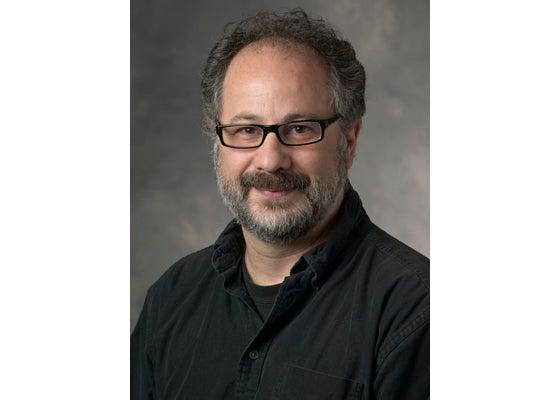Tom Devereaux Appointed Director of SIMES
Tom Devereaux, a professor of photon science at SLAC and Stanford University, has been appointed director of SIMES, the Stanford Institute for Materials and Energy Sciences.
By Glennda Chui
Tom Devereaux, a professor of photon science at SLAC and Stanford University, has been appointed director of SIMES, the Stanford Institute for Materials and Energy Sciences. SIMES is a joint institute of SLAC and the university and also constitutes the lab’s Division of Materials Science.
Devereaux, a computational physicist specializing in the study of advanced materials and fundamental interactions of matter with light, joined SIMES in 2007 and has served as the institute’s acting director since last summer.
“In this time period Tom has done a great job in leading SIMES, and also helping me. His support has been invaluable,” said Cynthia Friend, SLAC’s associate lab director for photon sciences. “I feel like we at SLAC are incredibly lucky to have Tom take on this leadership role.”
Former SIMES Director and SLAC Chief Scientist Z-X Shen said, “Tom brings to this job outstanding scientific vision, excellent leadership skill and exceptional dedication. I am delighted that he is willing to serve.”
Devereaux takes the reins at a time when SIMES is expanding its presence at SLAC. Founded in 2006 as XLAM, the X-ray Laboratory for Advanced Materials, it was set up to take advantage of scientific expertise and laboratories across many disciplines at Stanford and the powerful X-ray facilities available at SLAC, which today include the Stanford Synchrotron Radiation Lightsource (SSRL) and Linac Coherent Light Source (LCLS).
The institute is growing rapidly, from fewer than 100 researchers in 2008 to about 180 today and a 2011 budget of $13 million. Until now, its labs and offices have been concentrated on the Stanford campus. But this spring a significant number of researchers are scheduled to move into renovated office and lab spaces on two floors of SLAC’s Building 40 and 40A.
Under Devereaux’s leadership, the institute will be pursuing new research initiatives on topological insulators – materials that conduct electricity only on their surfaces – and technologies for generating solar power and transmitting and storing energy. The emphasis is on science that solves practical problems, Devereaux said – for instance, developing novel nanomaterials for energy storage (batteries) and advanced photon conversion (solar cells).
Devereaux came to SLAC from the University of Waterloo in Ontario, Canada, where he was a professor of physics. He is a research fellow of the Alexander von Humboldt Foundation and a fellow of the American Physical Society.
His own theoretical and computational work is part of a cycle, called “materials by design,” that researchers use to design new materials with atom-by-atom precision. In the first step, they use theory and simulation to come up with potentially useful and novel materials. They make those materials in the lab, and then use X-ray beams like those at LCLS and SSRL to examine the new materials, determine their properties and watch them perform under realistic conditions. Those results feed back into new theories and simulations, and the cycle continues.
In 2009, Devereaux and his colleagues received $2.1 million in funding to help set up a new soft X-ray instrument, SXR, at the LCLS, and develop the theory that goes along with doing pump-probe X-ray spectroscopy there.
Devereaux said he plans to continue his research as director of SIMES. “What gets me up in the morning is doing that science,” he said. “That’s what drew me here. We’ve got a great team, very connected, working on theory and experiments.”

(Photo by Steve Gladfelter/Stanford Visual Art Services)